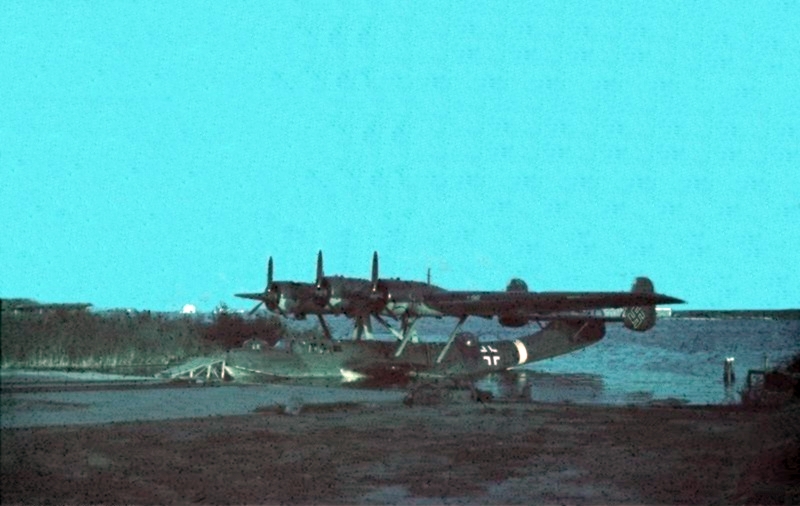The PBY Catalina (Cat) was manufactured by Consolidated Aircraft. It was developed in the 1930's and became famous during World War II by taking on a long list of roles. It was a cargo plane and a sea rescue plane. It was a bomber and it was a medical plane. You name it; it probably did it. I fell in love with this plane when I had a model of it. It had exquisite lines, retracting floats and landing gear, and rear bulbous windows that served both as side guns and in water exit and entrance to the craft. It just seemed unstoppable. It only had a maximum speed of 196 miles, and an altitude of about 15,800 ft. During the war, it was mass produced. After the war many were sold and one was bought by Jacques Cousteau. Unfortunately that plane crashed on the Tagus River (rio Tajo) near Lisbon, Portugal, while making a landing. The crash claimed the life of Phillipe Cousteu, Jacques younger son.
As a child, my grandfather told me of a german flying boat, the DO-24. It was made by Dornier. Just like the Catalina, it was developed in the 1930's. It also had some nice lines. It also had 3 engines, which was fairly rare. It also had twin tail and its floats where 'water wings' adjacent to the body/hull. I don't find it surprising that the DO-24 and the Cat had similar configuration. Long thin body that also served as a hull and a high wing that held the engines. The 'water wings' served as a way to get in and out of the craft while in water. Unlike the Cat, the DO-24 did not have a landing gear for runway landings. It was strictly a water lander. My grandfather told me he served on one in the war as a flight engineer. He said that the 'water wings' also served as secondary fuel tanks, and that they prefer to use up the fuel in those before making a landing. I asked him if he ever saw combat. He said that his plane never fired a shot, but instead would rescue downed pilots. They even rescued British pilots and took them back to their lines. I found that hard to believe, but I had no reason to think he was lying about it. He also told me that before serving on the DO-24 he served on a DO-X and went on a mission to listen to radio signals just about 30 miles off the coast of New York. I assumed that refueling was done by ship. It certainly was a different world back then. There was a restored DO-24 called DO-24 ATT. It featured modern engines and added landing gear. It flies for demonstration and education. The DO-24 had a maximum speed of about 212 miles per hour and a max altitude of almost 20,000 ft. It was faster and flew higher than the Cat, and took more cargo. The german machines tended to be more powerful than the allied ones.
The PBY Catalina and the DO-24 were great aircrafts for their times. Today we have developed impressive airstrip technology where we can send a engineering crew to make one in hours from a jungle. We also have large aircraft carriers and helicopters. Land everywhere cargo task is mostly done by cargo planes like the C-130. So, all the tasks that these flying boats did are divided among several aircraft and some techniques. Even so, we can marvel at what these planes and others like them accomplished from the 1930's to the 1950's.


